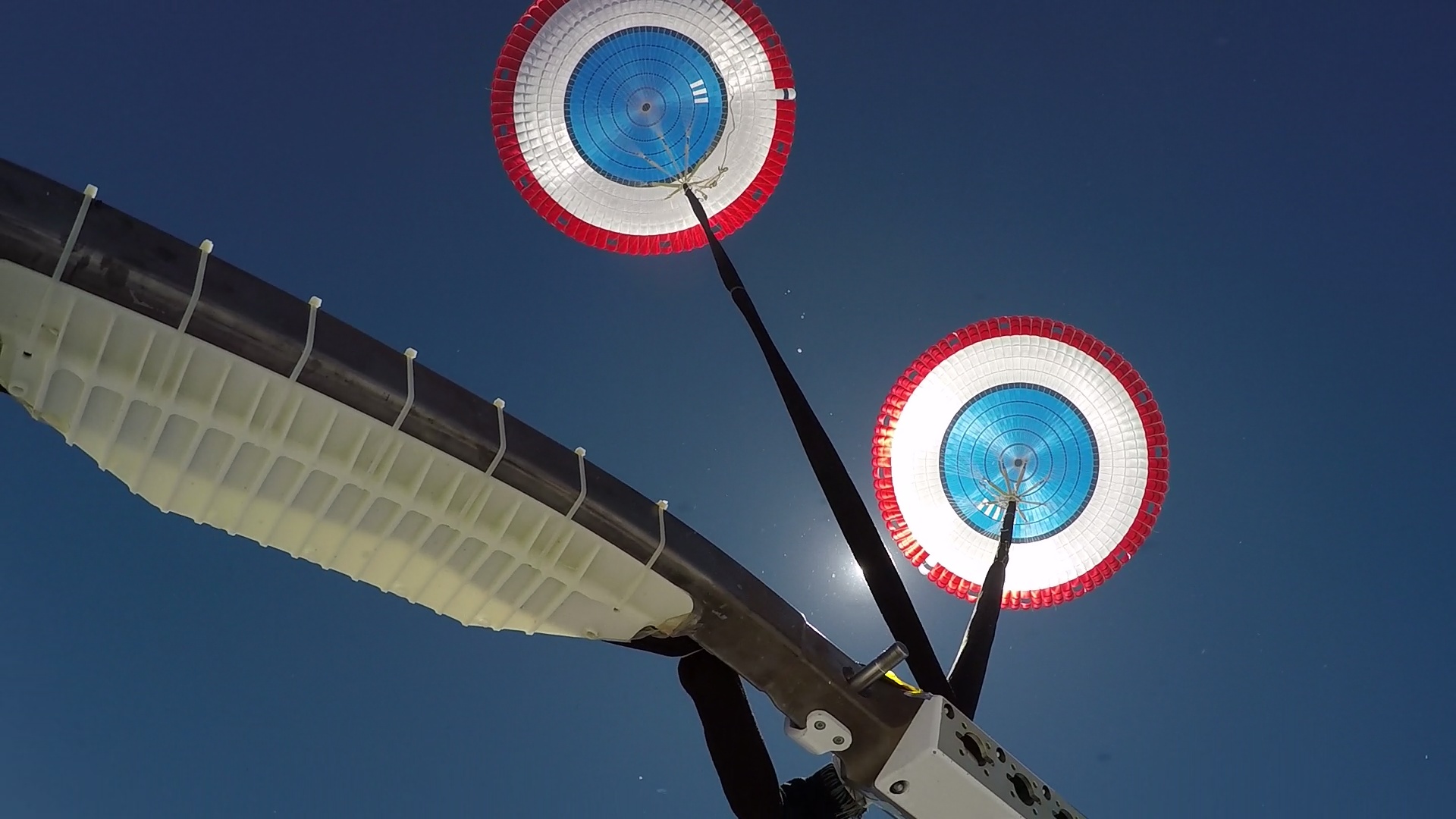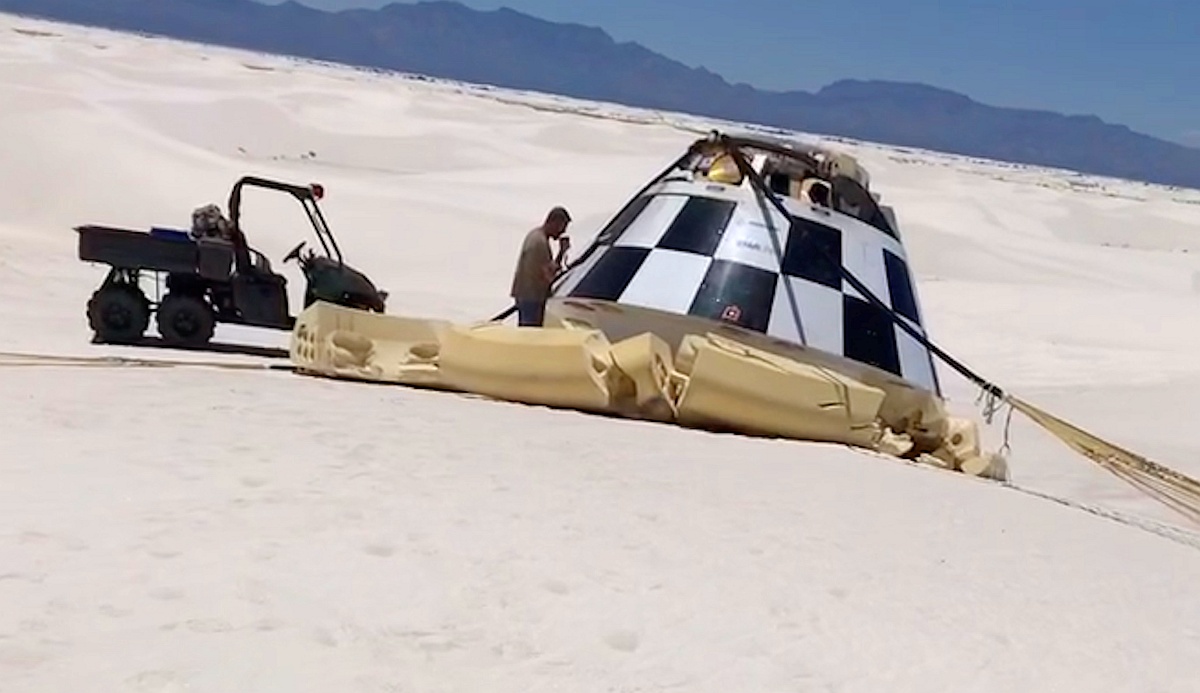Purpose of the flight and payload description
The CST-100 Parachute System Qualification program was aimed to test the parachute recovery system for CST-100 Starliner Crew Capsule being developed by Boeing to take astronauts to and from the International Space Station in partnership with NASA's Commercial Crew Program.
Effective testing of parachute systems for spacecraft returning from low Earth orbit should replicate the relevant environmental conditions under which those parachute systems are deployed following reentry from space . This include the max loading reached at the maximum dynamic pressure, along with demonstrating the dynamic stability of multi-canopy deployments and inflations under both nominal and off-nominal conditions.
Boeing teamed with Near Space Corporation (NSC) of Tillamook, Oregon for the balloon drop tests. These were conducted using a real-size mockup of the Starliner -also know as a "boilerplate"- which has the same mass, outer mold line, and center of gravity as the real flight vehicle. The nonfunctional craft is used to test various configurations and basic size, load, and handling characteristics of the future manned capsule. Releasing it from an altitude of 40.000 ft allowed the test vehicle to accelerate to relevant velocities at the same altitudes where the parachute deployment sequence begins during return from orbit.
NSC was responsible of the design and fabrication of the balloon and also developed for this series of tests a unique launch technique which allowed the payload to be connected to a fully inflated balloon system that has been securely anchored to the ground with multiple restraint lines, somewhat resembling the so called vertical launch technique. Once the payload is fully checked and connected, the lines are simultaneously severed by electrically fired pyrotechnic cutters and the payload gently ascends. To minimize the envelope's exposure to adverse conditions, very careful attention is paid to forecasts, real-time monitoring of launch weather, especially the wind and cloud conditions. NSC dynamically constrains the initial inflated bubble until it is raised vertically over the principal ground anchor at which point helium is rapidly fed into the balloon from multiple large tube trailers, filling the envelop with nearly 12 tons of lift in less than 1 hour. NSC also employs a series of tethers connected from custom ground winches to specially reinforced patches installed on the balloon fabric to control the rotation during inflation and up to launch.
White Sands Missile Range was chosen by Boeing to both conduct these tests and as the primary landing location for operational Starliner flights. To keep the balloon drop tests on the range and the landing site within the desired area, the launch site is moved according to the seasonal winds.
Details of the balloon flight
Balloon launched on: 6/24/2019
Launch site: White Sands Missile Range, New Mexico, US
Balloon launched by: Near Space Corporation (NSC)
Balloon manufacturer/size/composition: Zero Pressure Balloon
End of flight (L for landing time, W for last contact, otherwise termination time): 6/24/2019
Landing site: White Sands Missile Range, New Mexico, US
External references
- Starliner Parachute System Finishes Two Tests in One Week NASA Commercial Crew blog
- Starliner Space Capsule Completes Parachute Testing Boeing Press Release
15455If you consider this website interesting or useful, you can help me to keep it up and running with a small donation to cover the operational costs. Just the equivalent of the price of a cup of coffee helps a lot.



